Key takeaways:
- Effective advocacy for gender equality requires understanding intersectionality and diverse voices to address multifaceted challenges.
- Policymaking is crucial for translating advocacy into tangible change, dismantling systemic barriers, and creating accountability frameworks.
- Grassroots mobilization and technology are essential for amplifying voices and engaging broader audiences in advocacy efforts.
- Building coalitions across sectors can enhance resources, strengthen messaging, and create transformative partnerships for gender equality.

Understanding gender equality advocacy
Understanding gender equality advocacy is crucial for creating a society where everyone has equal opportunities regardless of their gender. From my experience working with various advocacy groups, I’ve seen firsthand how mobilizing people around shared values can ignite powerful change. Have you ever felt the collective energy of a community coming together for a cause? It’s truly exhilarating and shows how advocacy can transform passion into action.
As I reflect on my journey in this field, I realize that gender equality isn’t just a women’s issue; it’s a societal issue that impacts everyone. I remember attending a community forum where a father shared his struggle to support his daughter’s dreams without limiting her potential due to societal stereotypes. This moment made me realize that advocacy can resonate deeply with those we least expect, bridging gaps and fostering a more inclusive dialogue about gender roles.
Moreover, the complexity of gender equality advocacy lies in its intersectionality. It encompasses race, class, and sexuality, among other factors, that influence how we experience gender. I find myself often pondering: how can we ensure that our advocacy efforts address these multifaceted challenges? In my interactions, I’ve learned that listening to varied experiences is essential. Each voice adds depth to our understanding and underlines the importance of collaborating across different communities to achieve true equality.
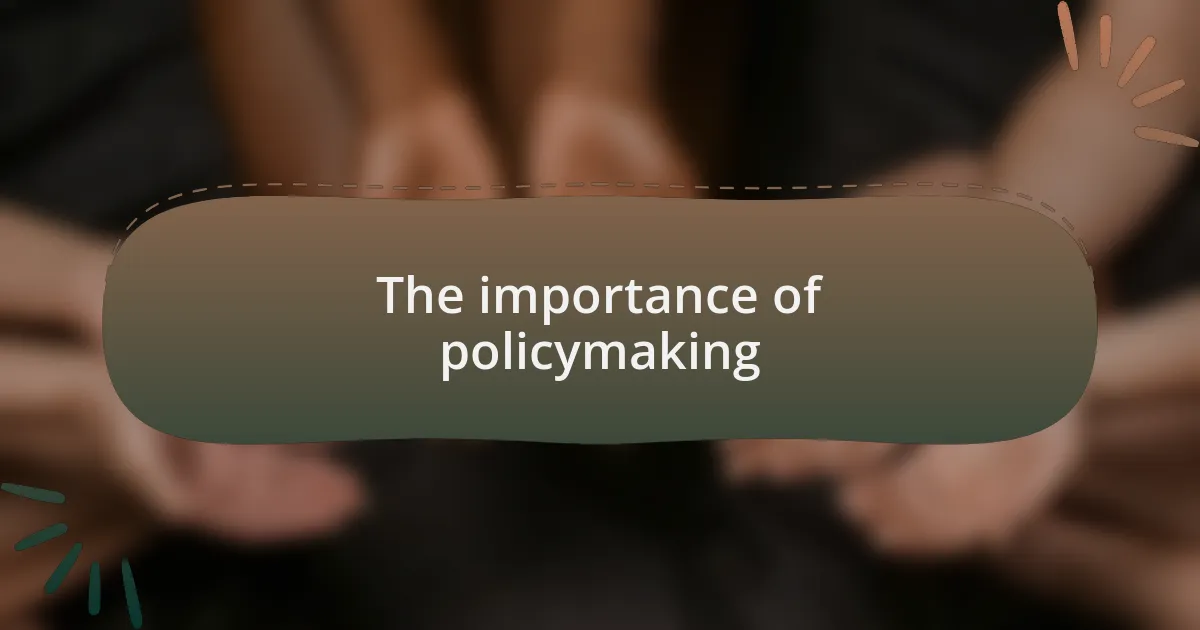
The importance of policymaking
Policymaking stands as a cornerstone for advancing gender equality, as it allows us to translate advocacy efforts into tangible change. In my experience, effective policies can dismantle systemic barriers that perpetuate inequality. For instance, I remember working alongside a dedicated group that lobbied for paid family leave—a policy crucial for allowing both parents to participate in caregiving without sacrificing their careers. This moment reminded me how policies can fundamentally reshape societal norms and expectations.
Moreover, the power of policymaking becomes evident when we consider its potential to create a framework for accountability. Have you ever observed how laws can shift societal attitudes over time? I’ve seen this happen with policies promoting equal pay; when organizations feel the pressure to comply, the ripples of change can extend far beyond the boardroom, influencing workplace cultures and influencing individuals’ perceptions of gender roles.
It’s vital to recognize that effective policymaking requires the engagement of diverse voices. During a recent panel discussion, I was struck by the varied perspectives offered by women from different backgrounds regarding the challenges they face. This experience highlighted for me that inclusive policymaking does not just yield better outcomes; it ensures that we truly address the needs of all communities. How else can we hope to create laws that resonate with the complexities of gender equality?
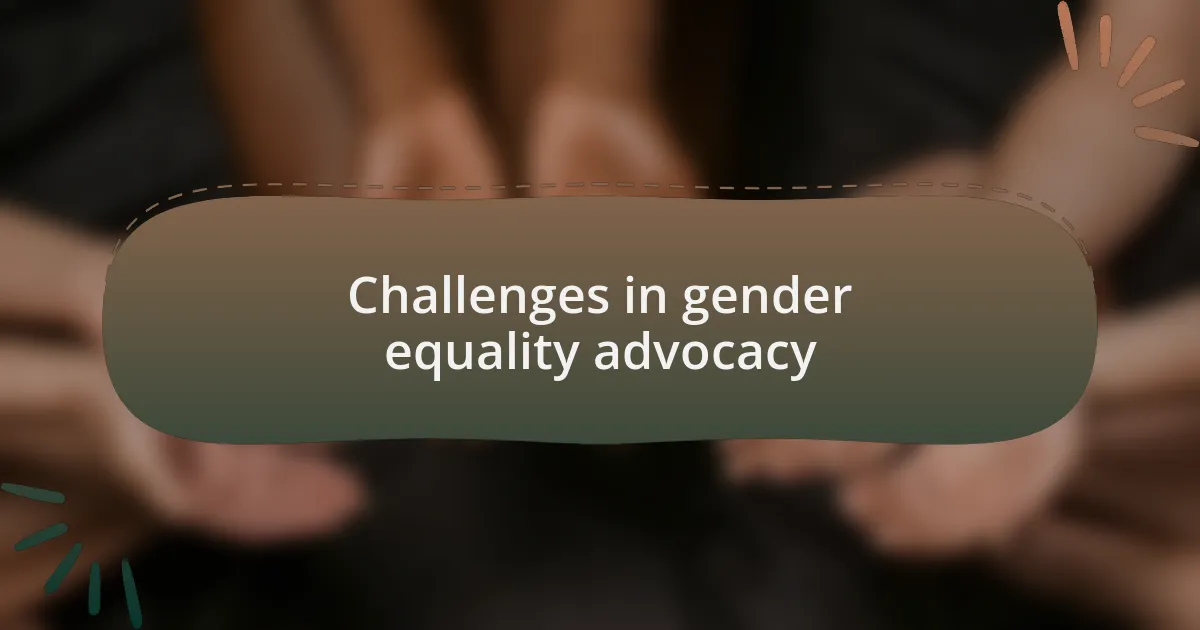
Challenges in gender equality advocacy
Advocating for gender equality is often met with significant hurdles, one of the most prominent being societal resistance. I recall attending a community meeting where passionate individuals voiced their frustration over entrenched stereotypes that seemed almost impermeable. The palpable tension in the room made it clear: shifting deep-seated attitudes takes time, effort, and, at times, feels like an uphill battle. Have you ever felt that your voice was drowned out by longstanding beliefs?
Another challenge I frequently encounter is the lack of resources to support advocacy initiatives. There have been times when I’ve had to make tough decisions about where to allocate limited funding—between organizing outreach events or conducting essential research. It’s disheartening to choose between two vital components of effective advocacy. How can we expect meaningful change without adequate support, especially when every dollar counts?
Moreover, navigating the political landscape can feel like a maze filled with obstacles. During my recent efforts to influence policy changes, I encountered bureaucratic red tape that stalled progress for months. It’s frustrating to grapple with processes that don’t seem to prioritize gender equality. What does it say about our commitment to this cause when systemic inefficiencies undermine our efforts?
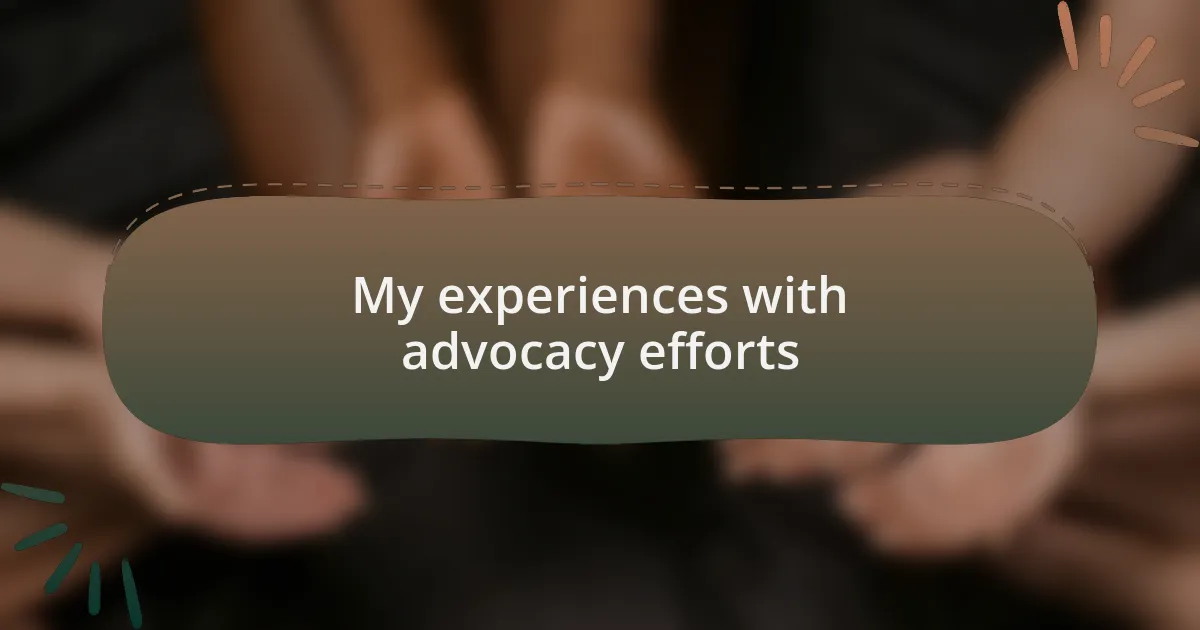
My experiences with advocacy efforts
My journey in advocacy efforts has often felt like a dance between hope and frustration. I remember organizing a local awareness campaign on gender inequality. Despite the well-planned outreach, only a handful of participants showed up, which left me questioning the engagement strategies we employed. It was a stark reminder that, sometimes, initiatives don’t resonate as we envision, prompting me to rethink how we connect with diverse communities.
One poignant experience occurred while collaborating with a grassroots organization focused on empowering women in low-income neighborhoods. I was moved by the stories of resilience shared by participants, many of whom faced daunting socio-economic barriers. Witnessing their courage reignited my passion and underscored the importance of listening closely to those we aim to uplift. How can we inspire change if we don’t fully understand the lived experiences of those affected?
Additionally, I’ve learned that building coalitions is both a rewarding and intricate process. One time, I participated in a joint effort between various groups vying for policy reforms. Although we shared a common goal, differing priorities led to intense debates. Those moments of conflict taught me that effective advocacy isn’t just about unity; it’s also about acknowledging and navigating our differences to forge a stronger alliance. Have you ever felt that the path to collaboration was just as crucial as the outcome itself?
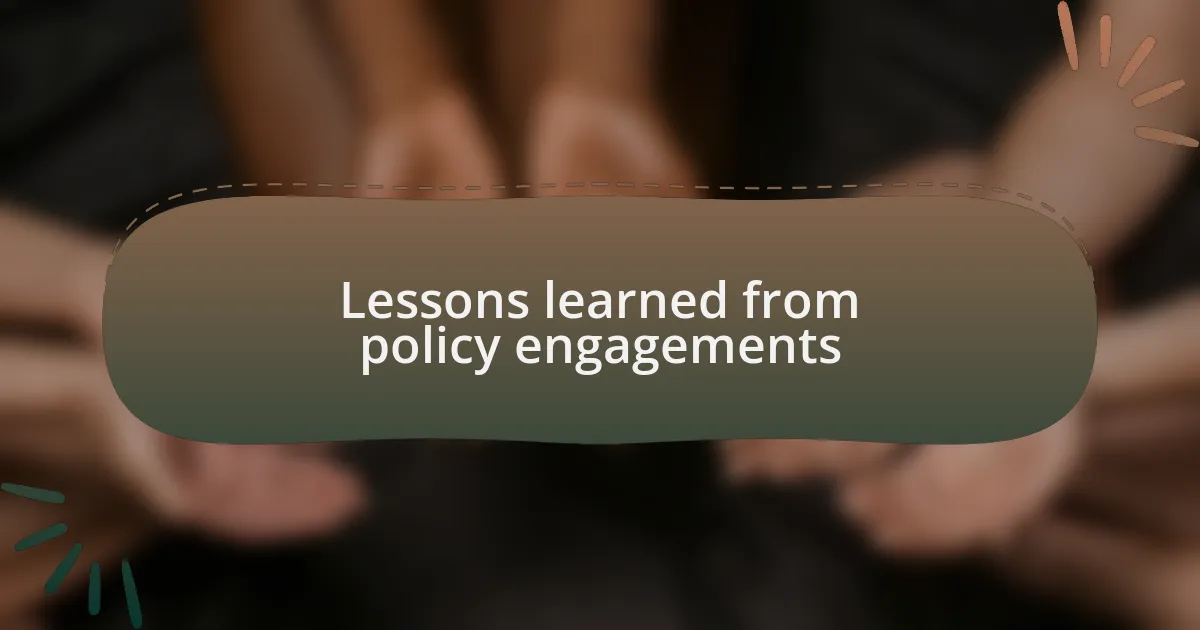
Lessons learned from policy engagements
Engaging in policy discussions has taught me that preparation is only half the battle; adaptability is key. During a pivotal meeting with policymakers, I found my carefully crafted proposals sidelined due to unexpected objections. This experience reminded me that the ability to pivot and respond to real-time feedback can significantly influence the outcome of our advocacy efforts. Have you ever had to think on your feet when things didn’t go as planned?
Another lesson I’ve absorbed is the significance of storytelling in policy advocacy. I vividly recall sharing a heartfelt account of a woman whose life was transformed by a local initiative. That moment shifted the conversation from abstract statistics to tangible human experiences. It reinforced my belief that weaving narratives into policy discussions can inspire empathy and drive meaningful change. Do you think stories have the power to resonate with decision-makers more than data alone?
Moreover, I’ve realized the importance of follow-up in sustaining engagement. After a series of policy forums, I took the initiative to check in with previous attendees, seeking their feedback on proposed changes. This small gesture not only strengthened our relationship but also generated invaluable insights for future advocacy. How often do we consider the impact of nurturing connections beyond the initial conversation?
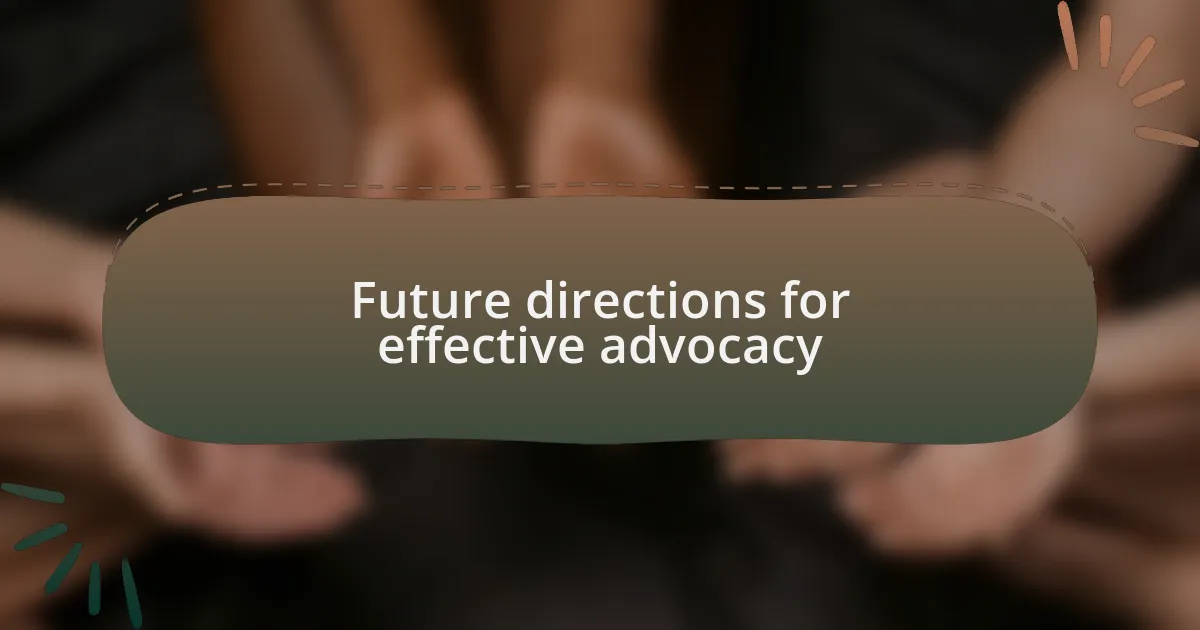
Future directions for effective advocacy
Future directions for effective advocacy
To ensure our advocacy remains impactful, I believe we must increasingly prioritize grassroots mobilization. During my time organizing local campaigns, I witnessed the extraordinary power of community voices coming together. Have you ever felt the energy in a room filled with passionate individuals? It’s invigorating and serves as a reminder that genuine change often starts at the ground level.
Another critical direction I foresee is the use of technology in amplifying our message. I remember a virtual town hall I hosted that connected advocates from vastly different regions. It was eye-opening to see how digital platforms can bridge geographical divides and foster collaboration. How can we harness this technology more effectively to reach a broader audience and engage those who may not have access to traditional advocacy channels?
Lastly, I think we should invest in building coalitions across sectors. I once worked alongside environmental and health advocates on a joint initiative; the synergy created was illuminating. Collaboration not only expands our resources but also strengthens our messaging. What opportunities do you see for cross-sector partnerships that could amplify our efforts in achieving gender equality?